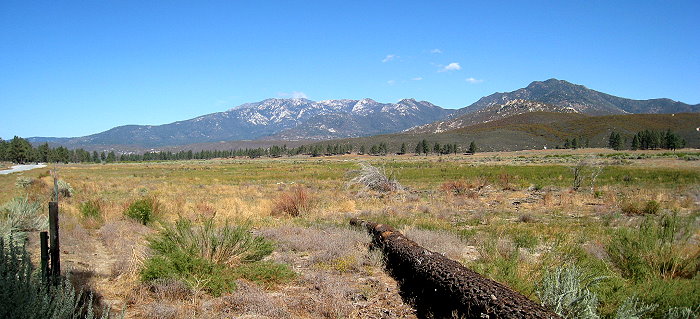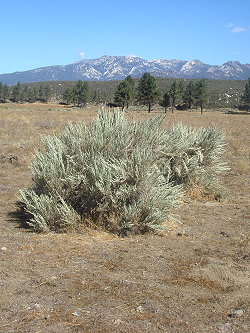 |
| Image from Good Vitis |
"Depending on location in the picturesque rolling hills within a vineyard, the amount of sunshine or shade and a large host of other factors which affect microbial growth and association, different species may affect taste and flavour of your flavourite wine. There clearly is more to choosing the best wine than knowing it's vintage and the Chateau it came from."
There was an incredible article or paper published recently which came out and revealed that different yeast species (microbes) may cause difference in wine batches even though they may be from the same identical grapes grown out of the same vineyard. Incredibly as many of us know, any type of farming of crops, be they grains, vegetables or even orchard crops will be different depending on the growing conditions experienced even withing the same geographical area. Crops grown on a southern exposure will be different than those on a northern exposure and so forth. Microbe species apparently are no different, we just simply don't see them and never give thought nor attention for no other reason than out of sight out of mind. They clearly are effected by the geography and micro-climates of a given area. Many and most red wines for example do better in a warmer or even hot climate. White wines do better where the climate is more northern and cooler than others. We all understand how specific areas of the world are better for growing wine grapes than others and there are any number of physiological variables which influence this. Now we know that microbes are no different.
 |
| Image frm Quora |
"That white chalky looking substance on grapes is where the yeast lives which creates that fermentation of wine grapes. Not commonly known to many, almost all most fruits have the same colonization of microbial species living on the outer skin layers of their fruit skins."
 |
| Created with bio-Render |
"The tiny, single-celled fungi (I’ll spare you the bad joke) known as yeast are responsible for creating wine; without them, it would merely be grape juice. Simply put, the yeast consumes glucose and fructose in grapes, converting the sugars into alcohol and carbon dioxide. The resulting product is much more complex and interesting than if the yeast had not intervened (thanks yeast!). These organisms exist throughout nature and are found on the skins of grapes (not a bad place to hang out if you’re looking for a free lunch), among other places."
~~~~~~~~~~~~~~~~~~~~~~~~~~~~~~~~~~~~~~~~~~
Eureka Alert source:
"In the wine industry, the fungal communities on grapes are especially important. The microbial species present on the berry may contribute to the fermentation process, and therefore the aromatic properties of the resulting wine", the authors explain. For this study, the researchers sampled grapes from different vines in three well-established commercial vineyards, each of which used a different farming system - organic, traditional or biodynamic- to cultivate the grapes."
"Across the three cultivation practices, they found that the same yeast species dominated in all vineyards, but the least treated vineyard had more variety of fungal species than the other two. They also found that within a single vineyard, small differences between vines, such as in temperature or sun exposure, could significantly alter the composition of the fungal community on grape surfaces. Setati adds, "Our findings could help viticulturalists and winemakers plan microharvest better, and implement better wine blending strategies to ensure consistency."
I especially loved one particular sentence in the paper. After listing the three types of vineyards - Traditional approach (those that employ the more conventional Industrial Agricultural approach by use of chemical fertilizers and Pesticides) - Biodynamic approach (those that employ many of the organic practices, but controversially will also spray with various herbal and mineral potions on the plants to control pest, plus may even employ mystic beliefs such as grinding up quartz and packing it into cows horns to attract cosmic forces to enhance growth. Many other oddball practices as well, but you get the idea) - Organic approach (the practice of replicating nature for natural biological controls, such as planting of roses, lavender and/or other flowers that attract and benefit predatory wasps and other beneficial for pest control. The use of sheep for grazing weeds and other grasses between the rows. Even employing a method of Agroforestry around the vineyard to create a beneficial micro-climate) - Now look at the photo below and that last line in the report.
 |
| Photo Credit: Luis Felipe Edwards Wines |
 |
| Photo Credit: King Estate Vineyards, Eugene, Oregon |
The family winery has been producing wine for over two decades southwest of Eugene, Oregon. They are dedicated to certified organic and sustainable farming methods and they specialize in producing Pinot Gris and Pinot Noir as well as a small amount of Chardonnay. Take note of the rows of Lavender shrubs bordering the exterior of the Vineyard itself. Such plants will attract predatory insects to keep pests under control where pesticides won't be necessary anymore.
And I really loved the last line in that report.
"Across the three cultivation practices, they found that the same yeast species dominated in all vineyards, but the least treated vineyard had more variety of fungal species than the other two."
Can you guess which one ? No kidding ? For those who have an interest in further reading of more in depth material and don't mind a lot of "Intellect Speak" , here are the further deeper reading of the study below.
PLOS-ONE.org: "The Vineyard Yeast Microbiome, a Mixed Model Microbial Map"
ABSTRACT:
Vineyards harbour a wide variety of microorganisms that play a pivotal role in pre- and post-harvest grape quality and will contribute significantly to the final aromatic properties of wine. The aim of the current study was to investigate the spatial distribution of microbial communities within and between individual vineyard management units. For the first time in such a study, we applied the Theory of Sampling (TOS) to sample gapes from adjacent and well established commercial vineyards within the same terroir unit and from several sampling points within each individual vineyard. Cultivation-based and molecular data sets were generated to capture the spatial heterogeneity in microbial populations within and between vineyards and analysed with novel mixed-model networks, which combine sample correlations and microbial community distribution probabilities. The data demonstrate that farming systems have a significant impact on fungal diversity but more importantly that there is significant species heterogeneity between samples in the same vineyard. Cultivation-based methods confirmed that while the same oxidative yeast species dominated in all vineyards, the least treated vineyard displayed significantly higher species richness, including many yeasts with biocontrol potential. The cultivatable yeast population was not fully representative of the more complex populations seen with molecular methods, and only the molecular data allowed discrimination amongst farming practices with multivariate and network analysis methods. Importantly, yeast species distribution is subject to significant intra-vineyard spatial fluctuations and the frequently reported heterogeneity of tank samples of grapes harvested from single vineyards at the same stage of ripeness might therefore, at least in part, be due to the differing microbiota in different sections of the vineyard.
Now just some concluding comments about this phenomena of microbial species living on the skins of fruits. This is of course true of most any fruit or berry, even in the wild. No doubt fermentation processes were discovered thousands of years ago by accident. Further trail and error brought us many of the countless varieties of fermented beverages we all enjoy today. No doubt some have also been lost and buried along with their inventors. But consider how these differences in microbes species can influence differences in wines are very much like the differences in tastes of cheeses. Cheddar, Blue Cheese, etc etc etc, all get differing unique flavours from different yeast species and practices. But somewhere back in time by chance someone discovered somewhere something unique which made the difference. Take the chaparral plant community. There are countless berries from the Manzanitas, Lemonade Berry and others with a sticky tart substance on their fruit skins which can be utilized in similar ways.
 |
| Ben Larios Jr |
Back when I first moved to Anza California, I befriended the Ben Larios family whose father worked for Jim Minor of Agri-Empire based in San Jacinto California. Originally Ben & Berta Larios were from a farming area of the state of Sonora Mexico and knew many traditional ways of food preparation and foraging for wild foods. In the early days, there were no grocery stores, which the exception of a Circle-K and a small old time market next to Frank Demartino Realty Office. There was no Mexican Foods to be bought, so most of the Farm Workers who worked for Agri-Empire went to the Larios family's old adobe home to purchase homemade (actually made by hand) flour and corn tortillas. They were wonderful. One day the mother, Berta Larios offered me to try her goat cheese. I never had goat cheese before and knew I didn't really like goat's milk, but I tried it. It was okay, but I wasn't crazy about it. Today however is a different story as I love both goat and sheep cheese and have it once or twice a week. She told me however that she didn't use the modern Rennet from the store to curdle the goat milk, she used instead dried Manzanita Berries which had substances on them for curdling the milk for making cheese. How cool was that ? I never knew that before. It's sad to say, but in this age of "Scientific Synthetic Artificial Biology", much of the old natural ways have been forgotten and most younger ones have been indoctrinated enough through consumerism marketing into not bothering with understanding how nature truly works, Big Corporations can provide convenience. The newer generations also have no clue as to how much better those foods also tasted way back when. |
| Credit - Rhapsody - Alentejo, Portugal |
Can you imagine what a human being could learn and accomplish through a healthy type of scientific understand devoid of poltical bias, greed and nothing more than a drive for discovery and wonder by means of trial and error ??? I mean if they were able to live forever on this Earth there would be no end to what they could learn and accomplish ??? Think of all the perfected wine vintages, beer recipes, design and build or what ever an individual's heart desired to perfect. Of course, this devising and planning could be applied across the board for any practical worthwhile venture. The possibilities are endless!




































